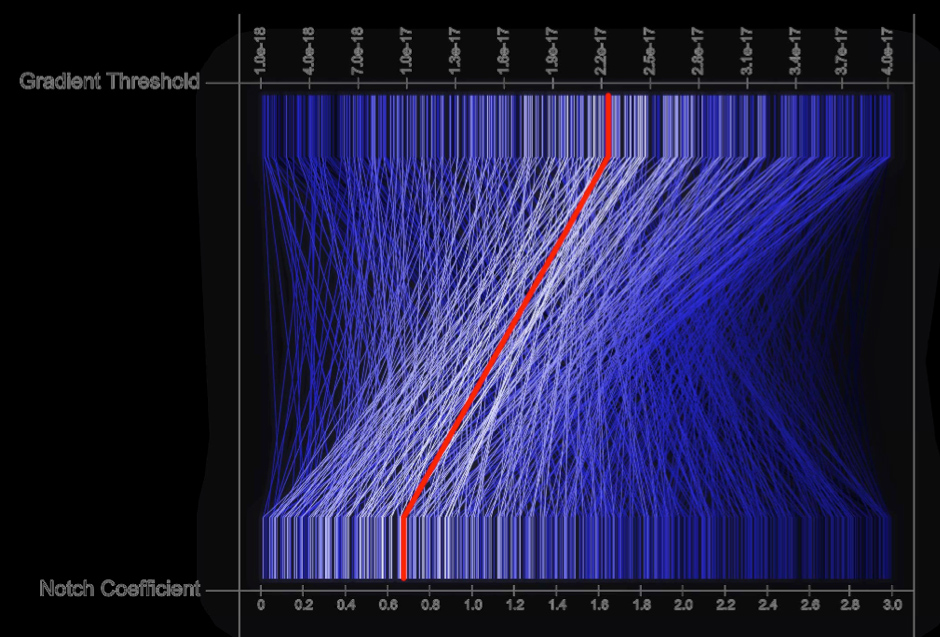“’Big data’ is characterized not only by large quantities of data, but by interrelated, interconnected and sometimes self-referential data,” explained Will Green, a graduate student in the University of Virginia’s School of Architecture.
With such far-reaching scope, it comes as little surprise that he and fellow architecture students are working with biomedical engineering students to create a way to visualize large data sets, funded by a grant provided by the U.Va. Alumni Association’s Jefferson Trust. Through this fellowship, Green said he has developed skills and techniques that “would otherwise have been uneconomical as a graduate architecture student.”
Such collaborations are among the goals of U.Va.’s Big Data Institute. In conjunction with the Jefferson Trust and the Office of the Vice President for Research, the institute is strengthening its fellowship program for graduate students interested in “big data” research, an initiative of U.Va.’s strategic plan.
Led by Don Brown, William Stansfield Calcott Professor of Engineering and Applied Science, the institute is working to help U.Va. become a leader in the growing revolution of complex data research and services.
The Jefferson Trust Fellowship Competition, also titled “Developing Students for Leadership in Data-Intensive Research and Innovation,” is designed to encourage graduate students from diverse disciplines to work together, inform and enhance one another’s existing research and engage in creative projects through the use and analysis of complex data sets.To help identify areas for improving their research and to report on their progress, the winners of last year’s competition presented reports to the initiative’s leaders and faculty advisers on Nov. 15. The student teams showcased their current work and future plans, and talked about lessons learned from the challenges of compiling and working with the huge data sets.
“One of our first problems was figuring out where to store the data – our computers didn’t have enough room,” said Ignacio Martinez, a graduate economics student whose team is researching student learning through massive open online courses, or MOOCs. “We eventually needed to install additional software, and later we learned that merging the data can take days to perform.”
Two other projects received funding in the first year of the fellowship: Green’s data visualization team (which includes one undergraduate member), and a group using data from traffic cameras to create computer models that could help improve bicycle commuter safety.
“It sounds funny, but I was surprised by the fact that we work really well together,” said graduate architecture student Elizabeth O’Brien, a member of the data visualization team. “The lens through which our [engineering] partner understood architecture was completely different than mine – but that unique challenge allowed me to understand some of the fundamental parts of architecture in a completely different way.”
Program leaders hope the unique pairings and resulting discoveries will have a major impact on graduate student scholarship and promote a collaborative research culture at U.Va., said Rick Horwitz, associate vice president for research and biosciences, who is facilitating and coordinating big data activities across Grounds.
“We want to make the big data conversation at U.Va. much more robust, and so we’re driving these conversations at the student level, by bringing people together from the humanities and the sciences to talk about the research questions they’re facing and what knowledge they can bring to the table,” he said.
To facilitate the collaborations and foster interdisciplinary engagement, the Graduate Studies Office has sponsored events designed to promote conversations both within and between disciplines on the use and analysis of big data.
To help students get started, the office encouraged individual departments to organize roundtable events where students could brainstorm research questions that could be generated or answered with the help of big data.
Following those discussions, students across disciplines came together Nov. 20 for a “Big Data Mixer,” a networking event designed to generate partnerships and free-flowing discussion surrounding the compilation and utility of big data. The mixer included both formal and informal networking opportunities, as well as a “fishbowl” discussion that helped the participants hear about each student’s research concentration and ideas for using big data.
“The parallels and synergies that I saw come out of the meeting really popped out,” Horwitz said. “You would see students go to the center of the room and say, ‘I see huge data in my research, but this is my issue,’ and then someone from across the room would get up and say ‘I can help you!’”
“I can see big data research becoming a more integral part of learning and graduate-level work,” O’Brien said. “What will become more important is finding ways to make big data research more efficient, and able to easily cross professional boundaries. This is where interdisciplinary work and cooperation comes in.”
Preparation for the next round of Jefferson Trust Fellowships is under way. Pre-proposal submissions for the 2014-15 academic year are due Jan. 15. An interdisciplinary review panel will ultimately select five projects to be funded with $20,000 toward the proposed research activities, which will receive guidance from a faculty adviser. In addition, $5,000 will be made available for each project to hire an undergraduate research assistant, if desired. The Jefferson Trust Award and the Graduate Studies Office will support the winners.
— by Lauren Jones
Media Contact
Article Information
December 4, 2013
/content/uva-encourages-graduate-collaboration-through-big-data-research

